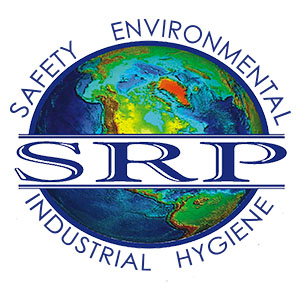IADC Rig Pass (SafeLand USA Endorsed)
SRP Environmental’s IADC Accredited and SafeLand USA Endorsed Rig Pass course is designed to ensure that all employees on oil and gas industry sites have an equal level of core HSE training as a part of their orientation. The Rig Pass course is usually completed in a one-day, eight-hour class. After successful completion of the course, each student is given a unique id card and bar code which allows access to most prime contractor oil and gas sites. The training is intended for new employees, but every employee regardless of time of service is required to possess a valid Rig Pass card. This class is a one-time requirement, refresher training is not necessary. For more information visit the IADC website.
SafeLand USA Course Curriculum
Basic Orientation For Onshore Contractors
Workplace Attitudes and Behaviors for Oilfield Employees
- Basic Safety Responsibilities and Principles
- Respect for Co-Workers
- Alcohol and Drug Policies and Prohibited Items
- Driving and Vehicle Safety
- Preparing for Work
Introduction to Oilfield Work Sites
- Getting Started at the Worksite
- Company Safe Work Practices & Policies
- Personal Protective Equipment (PPE)
- Introduction to PPE
- Specialized PPE
- Protecting Your Hearing
- Your Responsibility for PPE
- Hazard Awareness
- How to Keep your Body Parts!
- Safe Work Policies
- Hazardous Materials Communication and Drills
- Introduction to Job Safety Analysis (JSA)
- Hand Safety for the Oilfield Industry
- You Need to Know
- Hand Safety Risk Factors
- Hand Safety Awareness, Job Planning and PPE
- It’s Your Responsibility
Safe Oilfield Workplace Practices
- Good Housekeeping: A Safety Essential
- The Hazards of Poor Housekeeping
- The Elements of Good Housekeeping
- Confined Space Safety
- Introduction to Confined Spaces
- You Need to Know
- Confined Space Hazards
- Permitting and Safe Work Procedures
- Electrical Safety
- What You Need to Know
- Electrical Hazards
- Electrical Safety Practices and Procedures
Oilfield Hazard Recognition and Occupational Health
- Hazard Communication
- What You Need to Know
- Chemical Hazards
- Information Sources
- Introduction to Hazardous Materials in the Oilfield
- Hazardous Materials Definitions and Regulations
- Hazardous Materials Emergency Response
- Hazardous Waste Storage and Hazmat Transportation
- Accident Prevention Signs and Tags
- Occupational Health for the Oilfield
- Employee Responsibilities, Routes of Contamination and Protective Measures
- Oil-based Mud, Carbon Dioxide, and Nitrogen Gas
- Respirable Crystalline Silica
- Organic Solvents, Methanol and DEA
- Mercury, Lead, Hexavalent Chromium, Asbestos and Fibers
- Dusts and Sandblasting, Welding Fumes and Hazards
- Naturally Occurring Radioactive Material (NORM)
- Hydrogen Sulfide (H2S) Safety for the Oilfield
- What is Hydrogen Sulfide?
- H2S Properties and Characteristics
- Working Safety with Hydrogen Sulfide
- Plans and Contingencies
- Engineering Controls
- PPE
- Detection
- Safe Work Practices
- Emergency Response
Specialized Oilfield Work Procedures and Practices
- Job Safety Analysis
- You Need to Know
- The JSA Process
- It’s Your Responsibility
- Back Safety and Injury Prevention
- You Need to Know
- Prevention Through Stretching and Posture Relief
- Safe Lifting
- It’s Your Responsibility
- Working at Heights
- What You Need To Know
- Controlling the Hazards of Working at Heights
- Stairs, Ladders, and Other Equipment
- Scaffold Safety
- Dropped Object Prevention for the Oilfield
- Dropped Object Risk Factors
- Dropped Object Prevention
- Your Contribution
Oilfield Equipment Safety and Procedures
- Tool and Equipment Hand Safety in the Oilfield
- Lockout/Tagout
- What You Need to Know
- Lockout/Tagout Procedures
- It’s Your Responsibility
- Mechanical Equipment and Crane Rigging in the Oilfield
- Forklift Safety for the Oilfield Industry
- You Need to Know
- Information Sources
- The Stability Triangle and Forklift Terminology
- Forklift Inspection
- Operating the Forklift
- Rough Terrain Operations
- Common Oilfield Operations
- Additional Considerations
Environmental Protection and Risk Management for the Oilfield
- Wellsite Environmental Protection
- Wildlife Hazard Awareness
- JSEA, Simultaneous Operations and Permit to Work
- Management of Change
Oilfield Emergency and Incident Response
- First Aid, Bloodborne Pathogens and Staph Infection Prevention
- You Need to Know
- Basic First Aid and the Four “P’s”
- Bloodborne Pathogens and Infection Prevention
- MRSA and Staph Infection Recognition and Prevention
- Fire Prevention and Response
- What You Need to Know
- Fire Prevention
- Fire Emergency Procedures
- Incident Reporting and Investigation for Oilfield Employees
- Why Report?
- Types of Incidents
- Incident Investigation and Your Responsibilities
- Regulatory Compliance
Trenching and Excavating, Pits and Ponds (Land Endorsement)
- Introduction to Excavating and Trenching
- Hazard Identification
- Excavation Design and Incident Prevention
- Safe Work Operations and Crew Responsibilities
- Pits and Pond

 ">
">
 ">
">